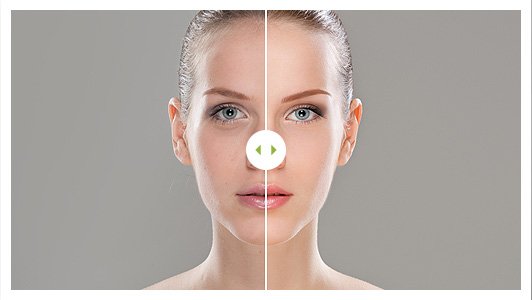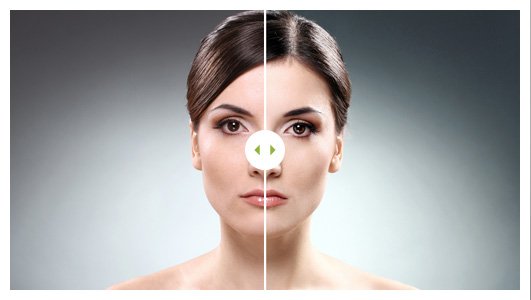Dermal Fillers: Which Option Is Right for You?
While some people love their “laugh lines,” others don’t. As with all aspects of aging, how we age and how we feel about it is highly individual. But biology happens to us all!
“As we get older, we lose subcutaneous fat,” explains Kasie Palmer, PA-C of Golden State Dermatology in Pleasanton and Livermore. “This means the cushion between muscles and skin is much thinner, so things like ‘crow’s feet’ or the ‘parentheses’ from nose to lips show up that much more.”
If you prefer smoother skin and fewer lines, or if you have scars, dermal fillers could be a good option. And you won’t be alone. According to the American Society of Plastic Surgeons, injectable dermal fillers (like Juvéderm®, Restylane®, Radiesse® and Scupltra®) increased by more than 70% from 2019 to 2022. That’s more than 14M procedures in the U.S. alone.
Here’s a quick guide to these minimally invasive procedures. (And note that dermal fillers are different from Botox® or other neuromodulator injections that temporarily “freeze” muscles.)
What is a Dermal Filler and How Do They Work?
Dermal fillers are a gel-like substance injected under the skin by qualified medical professionals. Designed to fill in wrinkles and lines, some of them also stimulate the body’s natural collagen production, and/or enhance moisture in the skin.
Results can last 6-12 months, and in some cases even longer. You can choose to repeat the procedure as desired, and treat multiple areas in a single visit, but you only need one treatment at a time as opposed to a series, to get great results.
The injections are done using a needle or sometimes a tool called a cannula. Studies show that the cannula (like a needle but with a blunt tip) are a great option for certain treatment areas because it offers more precision in terms of where the filler is placed. It also allows the doctor or nurse to inject filler in more than one location using just one opening. Because it’s more precise and involves fewer incision points, cannulas can help reduce bruising and swelling, which means faster healing.
Here’s a brief overview of the dermal fillers available at Golden State Dermatology.
Hyaluronic Acid
This may sound familiar to you – hyaluronic acid is an ingredient that naturally occurs in your skin. It keeps skin hydrated, which in turn helps “plump” the skin cells. Brand names include Juvéderm and Restylane.
Calcium hydroxylapatite
This is another substance that naturally occurs in our bodies, mainly in our bones. This filler is thicker than hyaluronic acid filler and can last longer, too. It’s been shown to stimulate natural collagen production. You can find this in the brand Radiesse.
Polylactic acid
Polylactic acid is a synthetic that stimulates your body to produce collagen. It’s non-toxic, biodegradable, and has been used safely as a suture material for decades. Its results can last more than two years. You can find it under the brand name Sculptra.
Which one is best for which skin concern?
- To fill hollows under the eyes or in the cheeks: If you want to restore volume in these areas, hyaluronic acid (HA) fillers such as Juvéderm and Restylane are good options.
- To plump lips: HA products are appropriate for this type of tissue as well, like Juvéderm Volbella XC.
- To fill in forehead lines: While Botox temporarily paralyzes muscles to smooth them out, products like Juvéderm and Radiesse fill in the lines instead.
- To create angles in the chin and jawline: Fillers are versatile. Beyond filling out some areas, products like Restylane LYFT can also be used to create angles in areas like the chin.
- To fill in lip lines: Restylane Silk and RHA 2 are good options for those small lines that can appear around the mouth.
- To smooth smile lines and chin wrinkles: Sculptra Aesthetic, which can last up to 2 years, is a good option for these types of wrinkles, whether deep or shallow, as is Juvéderm Vollure™ XC.
- To get that youthful glow: SKINVIVE by Juvéderm is a newly released kind of hyaluronic acid that doesn’t change the shape or volume of your skin. It’s designed to introduce intradermal (between the layers of the skin) microdroplets of hydration. The benefit is “glowing” skin that both looks and feels more hydrated – because it is!
Even your hands and your neck, both of which seem to show age before others, can benefit from dermal fillers like Radiesse.
As with any procedure, the first step is to consult with a board-certified dermatologist. They’re up-to-date on the latest studies and can help you navigate through the options to get results that work for you, your health, and your lifestyle.
Back to Blog Page


